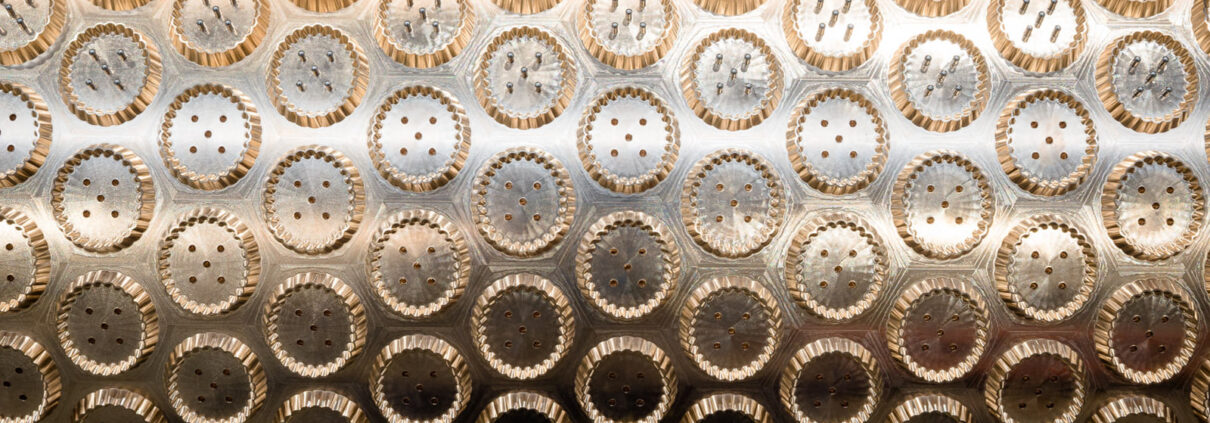SINGLE STAGE ROTARY CUTTER OR TWIN CUTTERS?
It is often thought that the rotary line offers greater possibilities and a greater production range than a printed line. In reality, even the printed line allows a certain flexibility at the production level. This is above all thanks to the decades-long study of Errebi Technology, a pioneer in the development of rotary cutters with a particular technology allowing you to create special products such as biscuits with inclusions (dried fruit, chocolate chips) or with wide passing holes (for making sandwiches for example), up to to products with a scrapless configuration or for the production of potato-type snacks, once the prerogative of processes other than this.
Errebi Technology rotary cutters are made with non-toxic materials that comply with food regulations and in particular have a bronze body which may or may not be Teflon coated and / or plastic.
Both types of cutters (twin and single stage) provide different construction options: with interchangeable rings, or cups, or solid construction, all customized solutions based on individual customer needs.
Great attention is paid by Errebi Technology to details such as the radius, release angle, cutting height, the configuration of the docker pins, etc. … all parameters that our engineers take into consideration when designing a new cutter.
We can identify two types of rotary cutters:
Single stage rotary cutters and twin cutters, both used to cut a sheet of laminated dough. In both cases, Errebi Technology team of technicians pays close attention to the cutting dimensions that must compensate for the elasticity of the sheet, its tension and shrinckage.
When to choose one type of cutter rather than the other? In principle, the single stage rotary cutter is recommended for simple products without details (Ritz, Agua), while it is preferable to have twin cutters in the case of products with many details (special Petit Beurre, Marie, Zoology) for better performance and release. In addition, the twin cutters allows greater flexibility in terms of sheet thickness, providing for the possibility of adjusting the gap between embossing roller and cutter roller, which would not be possible with a single stage rotary cutter where it is necessary to know the thickness of the dough sheet from the beginning in order to accurately design the cutting thickness or cutting height. Last but not least, the twin cutters allows you to make different products, using the same cutting roller and possibly providing different embossing rollers based on the different engravings you want to make.
Once again the long experience of Errebi Technology is ready to listen carefully to the different requests, offering customized solutions for a wide range of markets.






